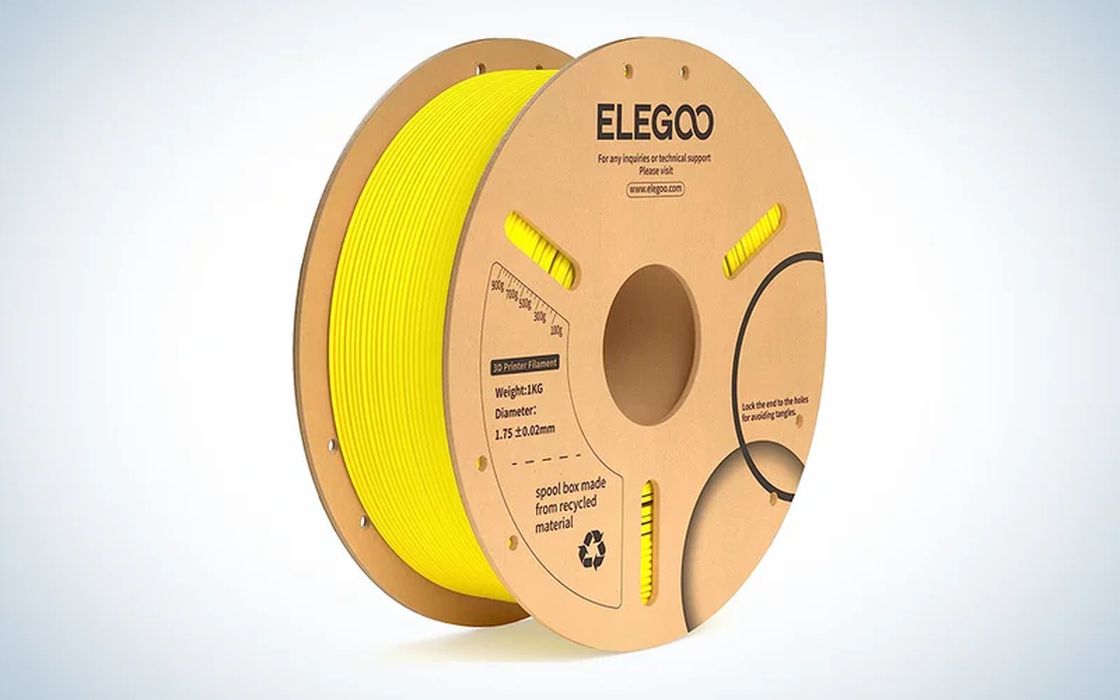
I’m reading a story from Popular Science about the “best 3D printer filaments”.
This is a bit different from the “best 3D printers of the year” posts that often appear in mass media, but the story behind it is pretty much the same.
Most of those stories are simply a vehicle to generate clicks for product sales and have little to do with the actual merit and true rankings of the products. Here we have a story that deals with filament instead of the 3D printers themselves — although there will no doubt be a printer story somewhere on their site, too.
Popular Science writes:
“If you can dream it up, it’s most likely able to be 3D printed. However, not all 3D printer filament is made alike, and picking the wrong one for your project can lead to frustration, disappointment, and a wonky half-realized object you’ll need to scrap. The best 3D printer filaments are equal parts tough, easy to use, and able to yield great results.”
That’s all very true, and filaments are indeed a key part of the 3D print success equation. Even the best and most finely tuned 3D printer can falter if subjected to lousy filament.
Fortunately, most filament is pretty decent these days. Gone are the days when you’d buy a cheap spool from a questionable online supplier and find that you literally could not print anything with the filament. It may seem hard to believe, but that’s how it was back then, and you were forced to buy premium-priced filament. Once I even had a poor-quality wood fiber filament instantly clog a nozzle so badly it required a torch to burn it out. Nowadays most filament works quite well, and quality differences are increasingly minor.
What’s more important is the choice and perhaps the price. Today’s 3D printers are able to handle a vast array of different materials beyond the usual PLA and ABS. That places the 3D printer operator in a new position where they must intelligently choose the right material for the job.
To their credit, Popular Science selected six categories that mostly make sense:
- Best overall: HATCHBOX 1.75mm Black PLA 3D Printer Filament
- Best for strength: PRILINE TPU 3D Printer Filament
- Best flexible: OVERTURE TPU Filament 1.75mm Flexible TPU Roll
- Best for beginners: AMOLEN PLA 3D Printer Filament
- Best for miniatures: eSUN PLA PRO (PLA+) 3D Printer Filament
- Best budget: ELEGOO PLA+ Filament
What is suspicious to me is the apparently lack of true 3D print knowledge in this story. For example, the temperatures are all listed in something called “Fahrenheit”, which is never used in the 3D print world. That immediately tells me something is not quite right.
The story repeatedly discusses adhesion qualities of the various filaments, and this is quite curious. Adhesion is like a dance: it takes two. The two being the material and the print surface.
Evidently the evaluator assumed all 3D printers have the same print surface. They don’t. Many use PEI-based surfaces, but many do not. Some are glass, some are metal, some require glue sticks, etc. Certain materials adhere best to certain plate types. In other words, adhesion isn’t really a factor for evaluation. It’s more of a result when you match a given filament with a specific machine and print parameters.
One filament is said to have a “tendency to tangle on the spool”. I have yet to see a filament tangle itself. Tangles are always caused by operator inattention and therefore this cannot be an evaluation factor.
The more I re-read this story, the more ridiculous some of the points become, and I was increasingly less trustful of the story. In the end it did not entice me to buy any of these materials.
However, I’m not the target audience for this story, and neither are you. Instead it seems they are targeting those new to 3D printing that might not yet have a proper understanding of the 3D printing process.
Perhaps it’s time to develop a material buying strategy for readers.
Via Popular Science
